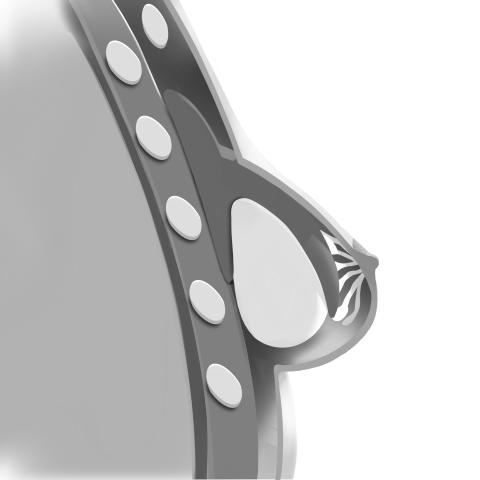How is a breast augmentation performed?
Breast enhancement is typically an outpatient procedure. There are various techniques for performing breast augmentations.
Breast Augmentation Using Implants
Your surgeon makes an incision, creates a pocket in the chest area and places an implant in the pocket.
Breast Augmentation Using Fat Transfer
If you do not want implants, a fat transfer is an alternative option. Using liposuction, your surgeon removes fat from an area of your body in which there are abundant fat cells (such as your abdomen, thighs, and hips), processes it, then injects the fat cells into your breast. If you don’t have enough fat available, this may not be an option for you. Not all the fat transferred survives the grafting process, and in some cases, your surgeon may need to repeat the surgery to retrieve greater volumes of fat for your augmentation.
Where will the surgeon place my breast implants?
Multiple factors, including your anatomy and your surgeon's recommendations, will determine how your surgeon inserts and positions your breast implant. Your surgeon will place the implant in a pocket in one of the below locations.
Underneath the Pectoral Muscle
The pectoral muscle is between the breast tissue and chest wall. With this placement, the surgeon places the implant underneath the pectoral muscle and on top of the chest wall. This placement may interfere less with mammograms and breast-feeding. However, the implant may move when you flex your chest muscles.

On Top of the Pectoral Muscle
The pectoral muscle is between the breast tissue and chest wall. With this placement, the surgeon places the implant underneath the breast tissue and on top of the pectoral muscle. This placement may interfere with mammograms and breast-feeding. However, the implant should stay in place when you flex your chest muscles.

What type of breast implants are there?
There are a lot of breast implant choices. Your aesthetic plastic surgeon will help you select an option based on your breast size and shape, medical history, and desired outcome.
You can choose between saline implants and silicone implants. Choosing the type of implant typically comes down to personal preference and your surgeon’s opinion. You will also need to choose a size and shape.
Saline-Filled Breast Implants
Saline breast implants are filled with sterile saltwater. They may be prefilled at a predetermined size or filled during the surgery to allow for minor modifications in the implant size.
Structured Saline-Filled Breast Implants
Structured saline breast implants are filled with sterile saltwater but contain a structure inside so they behave as if they are filled with soft, elastic silicone gel. These implants hold their shape better than traditional saline implants. The FDA and Health Canada approved these implants in 2014, and they have been available since 2015.
Silicone Gel-Filled Breast Implants
Silicone gel breast implants are filled with soft, elastic gel and are available in various shapes and degrees of firmness. All silicone gel breast implants are pre-filled. If you are getting a larger implant placement, you’ll likely have a longer incision.
Cohesive Gel Silicone Gel-Filled Breast Implants (also known as “gummy bear” or “form-stable” implants)
Cohesive gel silicone breast implants are filled with a cohesive gel, made of crosslinked molecules of silicone, which makes them a bit thicker and firmer than traditional silicone gel implants. They hold their shape better than traditional silicone gel implants too. The FDA approved these implants for use in the United States in 2012. These implants have been available in many areas of the world since 1992.



